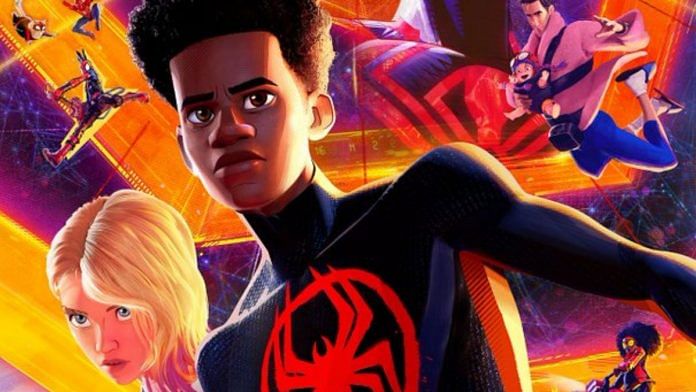Matching up to the humongous success of the 2018 Spider-Man: Into The Spider-Verse is a tough task, especially when Marvel fans are becoming increasingly weary of its expanding multiverse. But in the most Spidey-esque Spider-Man film ever, Spider-Man: Across the Spider-Verse, debutante directors Joaquim Dos Santos, Kemp Powers and Justin K Thompson deliver a web-slinging triumph that even surpasses the colossal impact of its predecessor.
If the first film won the Best Animated Feature award at the 2019 Oscars for its fantastic storytelling and state-of-the-art computer graphics, the second instalment gives a fresh twist to a similar tale. Most importantly, the makers are not planning to stop at part two – this mad multiverse ride will wrap up only in 2024, with Beyond the Spider-Verse.
Writers Phil Lord, Christopher Miller, and David Callaham offer some handy recaps for those who haven’t watched the first part of this animated saga.
A one-of-its-kind animated adventure
The first movie focused on the half-Black, half-Puerto Rican Spider-Man of Brooklyn, Miles Morales (Shameik Moore). The second one broadens its horizon and dives into the universes beyond his. Before catching up on what Brooklyn’s Spider-Man has been up to, the film touches upon the life of Gwen Stacy (Hailee Steinfeld), a Spider-Woman of her universe, as she grieves her best friend Peter Parker’s demise.
The sequel spreads its wings and goes bigger from here, but its heart lies with Gwen and Miles.
The film introduces a Spider Society, a team of Spider-People (anybody could be the said superhero here) from across the multiverse. Miguel O’Hara (Oscar Isaac), a stoic and authoritative Spider-Man, (a.k.a. the futuristic Spider-Man 2099), leads the team. Spider Society’s sole purpose is to protect the multiverse and seek out “anomalies” that might threaten to collapse time and space and bring them back to their respective universe.
But things heat up when the beef between Miguel and Miles escalates into a massive conflict, making Spideys question their morality.
That’s not the only foe looking into Miles’ eyes, though. A villain named The Spot (Jason Schwartzman), who has the superpower to traverse through the multiverse, also gets stronger as the story progresses.
Besides Gwen and Miles, the film is a launching pad for multiple new Spideys. While there is a pregnant Spider-Woman, Jessica Drew (Issa Rae), zooming around on her bike, there is an Indian Spider-Man named Pavitr Prabhakar (Karan Soni) inhabiting Mumbattan (a fictional combination of Mumbai and Manhattan) who obtained his powers through magic as opposed to a spider bite. There is another fascinating Spidey named Hobart “Hobie” Brown/Spider-Punk (Daniel Kaluuya), a Black British punk rock version of Spider-Man, who is perhaps the coolest Spider-Man you will ever see.
Also read: Jason Momoa steals the show in Fast X while Vin Diesel is stuck preaching about family
Rich, immersive visuals
The screenplay, characterisation, and background music do wonders for the film, but it is the animation that brings the cake home for Spider-Man: Across The Spider-Verse, making it a true visual bonanza.
Each universe has its own unique design, giving the impression that a different artist brought each one to life. Spider-Man: Across The Spider-Verse uses several animation styles to produce a distinctive world for its Spideys. For instance, there is a Lego universe, a watercolour one that changes hues per its resident Spidey’s moods, and a futuristic New York one from the Marvel 2099 world. So breathtaking are these richly crafted visuals that viewers will find themselves lost in them.
If the first film had a singular animation style that loomed large on the narrative, this movie has six. As Lord, one of the writers and producers of the film said, the intent was to amaze the audience as the film’s characters jumped into new universes, using varied styles to evoke varied emotions.
The movie builds its own template of animation and innovation, using it to create pure magic on screen. With multiple animation styles, comic book textures, and frame rate experiments, this superhero film is in a league of its own.
If you have been missing your friendly neighbourhood superhero for far too long and have had your fill with Marvel offerings (this film is not tied to MCU despite a few easter eggs here and there), Spider-Man: Across The Spider-Verse is the film for you. Perhaps, the best Spider-Man film ever.
(Edited by Zoya Bhatti)



